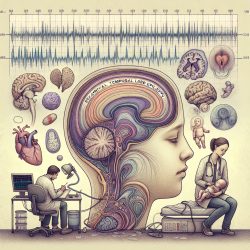Introduction
Neocortical Temporal Lobe Epilepsy (nTLE) is a distinct form of epilepsy that, while less common than Mesial Temporal Lobe Epilepsy (mTLE), presents unique challenges and opportunities for treatment. Recent advancements in diagnostic techniques have improved our understanding and management of nTLE, leading to better outcomes for patients. This blog aims to provide practitioners with insights into the latest research and encourage further exploration into this evolving field.
Understanding nTLE
nTLE is characterized by seizures originating in the neocortical regions of the temporal lobe. Differentiating it from mTLE can be challenging due to overlapping symptoms. However, recognizing nTLE is crucial as it can significantly influence treatment decisions, particularly regarding surgical interventions.
Advancements in Diagnostic Techniques
Recent studies have highlighted the importance of advanced diagnostic tools in accurately localizing seizure foci in nTLE. Techniques such as high-resolution structural MRI, functional imaging (PET and SPECT), and electroencephalography (EEG) have become invaluable in distinguishing nTLE from mTLE.
- EEG: Both interictal and ictal EEG patterns can help localize seizures. While scalp EEG provides initial insights, intracranial EEG offers more precise localization, crucial for surgical planning.
- Functional Imaging: PET and SPECT scans have proven effective in identifying metabolic abnormalities associated with nTLE, aiding in the differentiation from mTLE.
- Magnetoencephalography (MEG): MEG complements EEG by providing additional spatial information, particularly useful in cases where EEG findings are inconclusive.
Implications for Treatment
The accurate localization of seizure foci in nTLE has significant implications for treatment. Surgical interventions, when applicable, can lead to improved outcomes. The integration of advanced imaging and EEG data allows for more tailored surgical approaches, potentially increasing the success rates of resections.
Moreover, understanding the distinct characteristics of nTLE can inform pharmacological strategies. While the choice of antiepileptic drugs (AEDs) may not differ significantly between nTLE and mTLE, precise localization can guide more effective treatment plans.
Encouraging Further Research
Despite advancements, nTLE remains a complex condition requiring further research. Practitioners are encouraged to engage with ongoing studies and contribute to the growing body of knowledge. Collaborative efforts can lead to the development of innovative diagnostic and treatment strategies, ultimately enhancing patient outcomes.
To read the original research paper, please follow this link: Neocortical Temporal Lobe Epilepsy.










